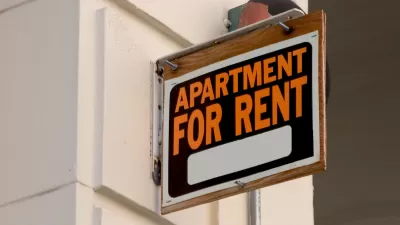When the Townhomes on Capitol Hill replaced the Ellen Wilson public housing project 14 years ago, mixed-income housing was a novel strategy. Now that such projects are common, what lessons can the Townhomes provide for developing affordable housing?
"After the U.S. Department of Housing and Urban Development awarded a $25 million grant [PDF] to a neighborhood group in 1993 to tear down 134 abandoned units at Ellen Wilson and replace them with an equal number of mixed-income homes, many civic leaders doubted whether middle-class professionals would live in the same development with public housing tenants," writes Jessica Schulberg. "They clearly have, with a third of the Townhomes’ residents now making market-rate monthly payments that subsidize those of people such as [resident Juanita] Jones who pay much less."
Though the Townhomes' scale is too small to make a dent in D.C.'s growing affordability crisis, the award winning project is seen as a model for citywide efforts. As Schulberg explains, a design that blended the development seamlessly into the surrounding neighborhood was a crucial element in the project's success.
“'We knew that Capitol Hill worked,' said architect Amy Weinstein, who designed the development by meticulously emulating the Victorian townhouse aesthetic of Capitol Hill in the new townhomes. She also proposed two new streets through the former Ellen Wilson property. The resulting I Street SE and Ellen Wilson Place knit the Townhomes back into the surrounding neighborhood."
FULL STORY: Built to replace Ellen Wilson housing project, townhouses are a mixed-income model

Maui's Vacation Rental Debate Turns Ugly
Verbal attacks, misinformation campaigns and fistfights plague a high-stakes debate to convert thousands of vacation rentals into long-term housing.

Planetizen Federal Action Tracker
A weekly monitor of how Trump’s orders and actions are impacting planners and planning in America.

In Urban Planning, AI Prompting Could be the New Design Thinking
Creativity has long been key to great urban design. What if we see AI as our new creative partner?

Cal Fire Chatbot Fails to Answer Basic Questions
An AI chatbot designed to provide information about wildfires can’t answer questions about evacuation orders, among other problems.

What Happens if Trump Kills Section 8?
The Trump admin aims to slash federal rental aid by nearly half and shift distribution to states. Experts warn this could spike homelessness and destabilize communities nationwide.

Sean Duffy Targets Rainbow Crosswalks in Road Safety Efforts
Despite evidence that colorful crosswalks actually improve intersection safety — and the lack of almost any crosswalks at all on the nation’s most dangerous arterial roads — U.S. Transportation Secretary Duffy is calling on states to remove them.
Urban Design for Planners 1: Software Tools
This six-course series explores essential urban design concepts using open source software and equips planners with the tools they need to participate fully in the urban design process.
Planning for Universal Design
Learn the tools for implementing Universal Design in planning regulations.
Appalachian Highlands Housing Partners
Gallatin County Department of Planning & Community Development
Heyer Gruel & Associates PA
Mpact (founded as Rail~Volution)
City of Camden Redevelopment Agency
City of Astoria
City of Portland
City of Laramie





























